I almost ruined the milky sheet of glass at the bottom of my animation stand the other day. I was animating a scene of trash floating through water. This scene was actually an eight frame maximized loop based on a pencil test I'd animated earlier.
This means that I numbered eight sheets of paper and animated the movement of the trash over these pages on my lightbox. I then kept cycling the pages and continuing the movement on each page. This creates a maximized (as opposed to a regular) loop. Once the drawings are finished I lay them out on my stand and photograph them. These photos then become guides for my animation process. Below you can see one of the drawings being photographed on my stand. To watch the video of the pencil test, please visit my other blog.
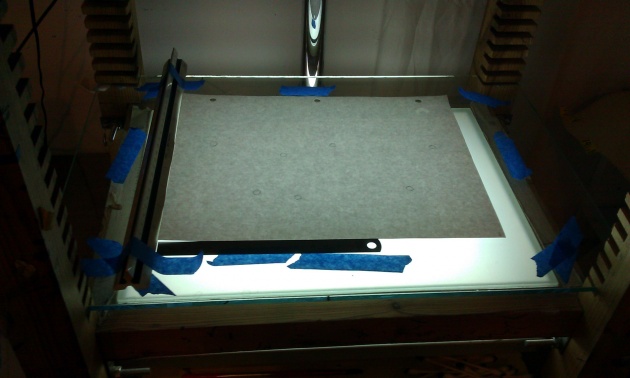
VIDEO
Yes, this means that for an eight frame maximized loop I only have to animate eight frames! It's a lot more prep work, but the actual animation session is short. BUT, they are eight HARD frames to get right.
They're hard to get right because I've got a lot going on as you can see below on my animation stand. The base layer (my milky glass), has a pool of ink and water that I have to agitate in just the right manner right before taking each photo. The top layer has the bits of trash that I'm moving a little each frame.
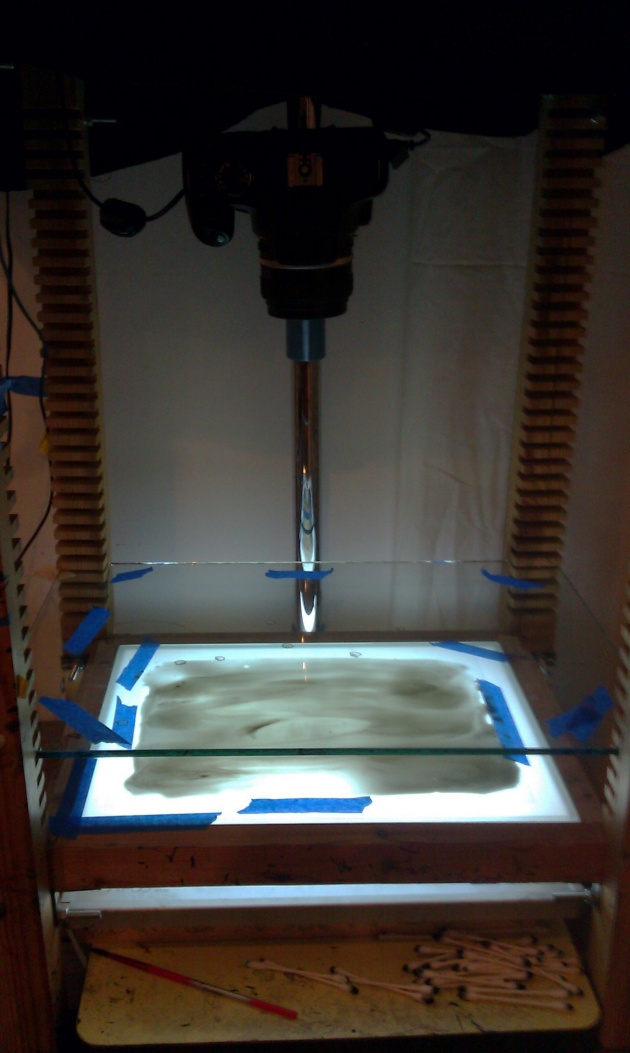
This shot below shows my laptop as well as my stand. My laptop is hooked up to my DSLR through Dragon frame grabbing software, so on the screen you can see what my camera is seeing.
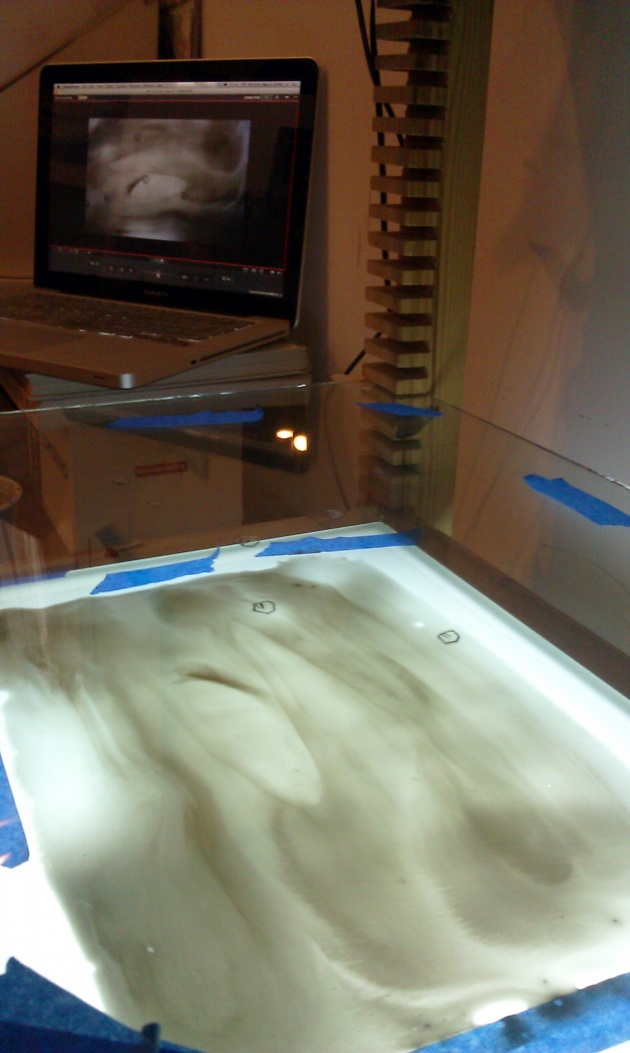
This shot below shows more clearly the two different layers involved in the shot.
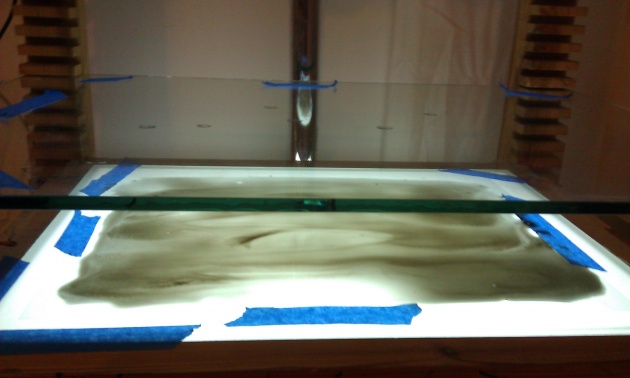
After animating the scene this is what the pool of ink and water looked like:
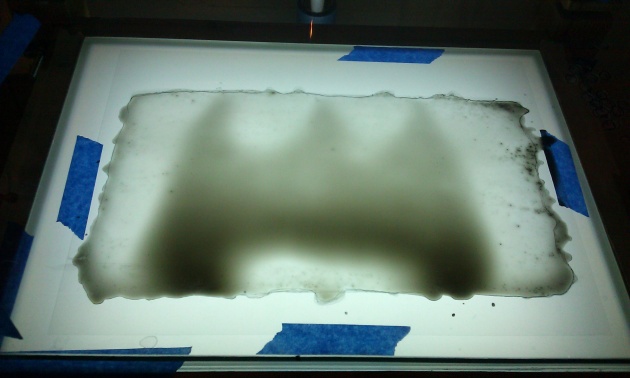
I thought it would be a good idea to leave the pool like this so it could dry, because sometimes you get cool patterns. But, overnight a little of the water got between the sheet of plastic and the glass, and even though my lightbox was off, the plastic fused to the glass!
I came in the next morning and spent an hour carefully peeling it off and then scraping the fused bits off with a scalpel:
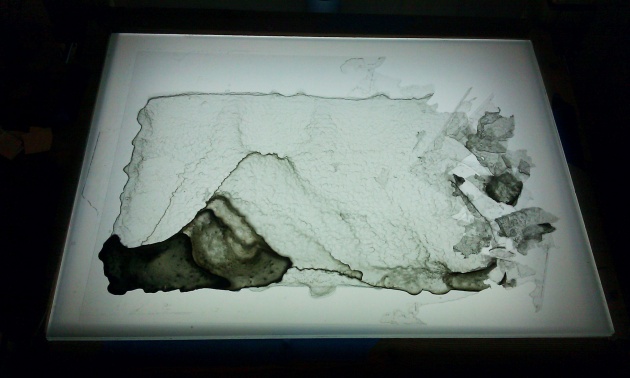
Luckily, it all came off with little damage! I was not looking forward to going back to the glass shop to get new milky glass for my stand.
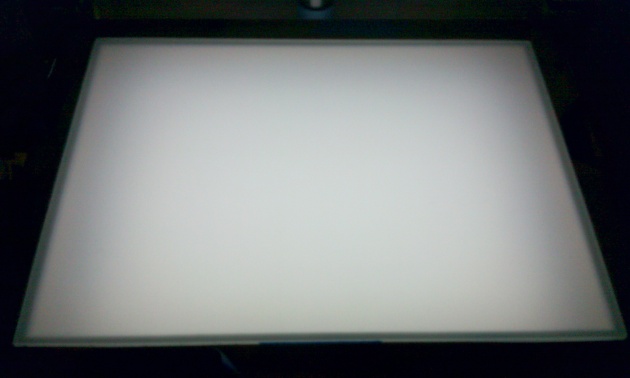
At least the scene I was animating turned out well! That's always the most important thing.



